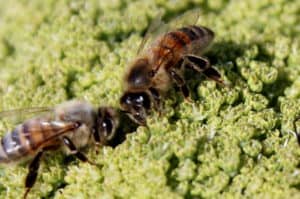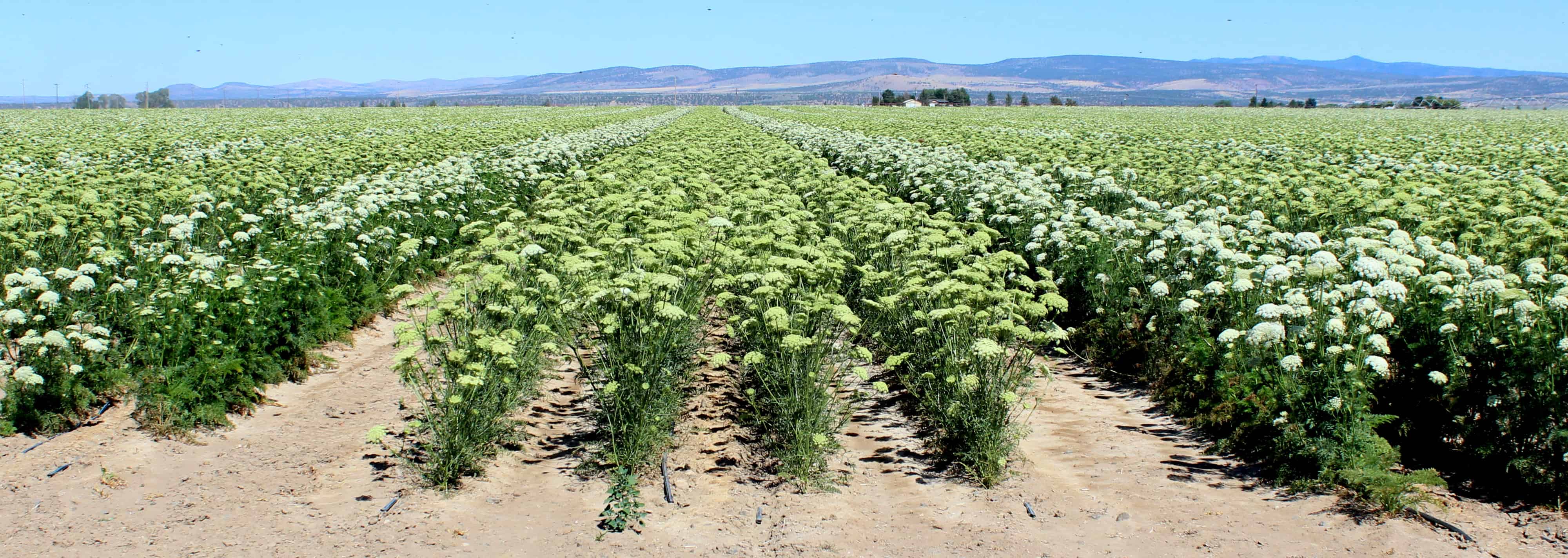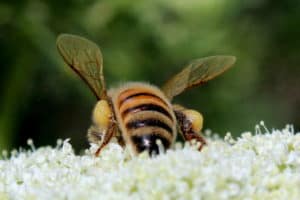
Carrot (Daucus carota) is a biennial member of the Apiaceae family that includes other familiar edibles like celery, parsley, fennel and dill. When grown for food, carrots are harvested at the end of the first growing season. Seed production requires the plant to receive sufficient winter chilling followed by flowering in the second season. Seed carrot is typically planted in August, pollinated the following July, and harvested in September. Producing carrots with the desired eating and aesthetic characteristics for the fresh market requires hybrid seed from carefully selected lines. Hybrid seed production involves using a male fertile-line to act as a pollen donor for a male-sterile (female) line that will be harvested for seed. Different varieties of carrots as well as Queen Anne’s Lace (wild carrot) readily cross pollinate so seed production requires cooperation amongst growers to isolate different varieties. A distance of at least a mile between fields with differing male pollen donors is required to limit unwanted cross pollination and ensure seeds will produce carrots with the desired traits.

The area surrounding the town of Madras in Jefferson County provides the majority of hybrid carrot seed to growers around the United States. Located east of the Cascade range in Central Oregon, Jefferson County provides the warm dry days and cool nights required for carrot seed production. Carrot seed is a major summer pollination crop in the region with over half of our BIP-PNW partner beekeepers contributing to the approximately 10,000 colonies needed. Colonies rent for ~$100 and are required from early July to mid August.
Within a field, male and female plants are sown in separate rows. Two male rows alternating with four rows of female is a common configuration. Male flowers are white while female flowers are pale green in color.

A carrot inflorescence is a set of umbels with the primary umbel opening first at the top of the plant with secondary and tertiary umbels lower on the stem. Seed is harvested once the primary and secondary umbels mature with each floret of an umbel producing a pair of seeds.

Carrot flower does produce some nectar yielding a fairly dark, strongly flavored honey that is not particularly desirable as a table honey. Carrots are more valuable to bees as a source of pollen with a large number of foraging bees carrying dijon colored pellets visible in blooming fields.